Blue Ridge Parkway
Check out these handy guides to help you plan the perfect Blue Ridge Parkway road trip, covering everything from the best hiking trails, waterfalls, and scenic vistas to Autumn leaf-peeping and great mountain towns to stop in along the way!
We’ve also got in-depth guides to all the best cabin rentals, hotels, resorts, and treehouses in the Blue Ridge Mountains, to ensure you have the most amazing Blue Ridge Parkway vacation possible…
Driving the Blue Ridge Parkway
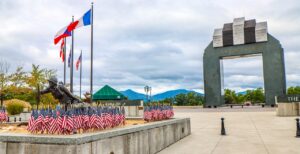
Visiting the National D-Day Memorial in Bedford VA
If you visit Bedford VA (located about 28 miles east of Roanoke), you won’t get far before you realize how much of an impact World
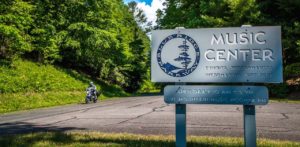
The 10 Best Blue Ridge Parkway Museums to Visit
The Blue Ridge Parkway (and the surrounding Blue Ridge Mountain towns) is heaving with options for amazing outdoor adventures. But whether it’s a rainy day,
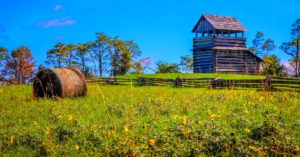
Exploring Groundhog Meadow & Groundhog Mountain Picnic Area
The 469-mile Blue Ridge Parkway is roughly split evenly between North Carolina and Virginia, linking two of the most beloved US National Parks– Great Smoky
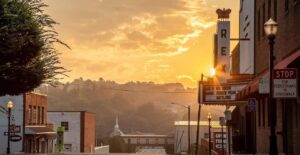
7 Fun Things to Do in Galax VA in Autumn
With a total land area of 8.28 sq miles, Galax is a wonderful little Virginia mountain town to visit at any time of year. But, in our
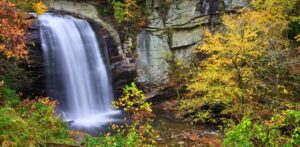
Highlights of Driving the Forest Heritage Scenic Byway NC (BRP MP 412)
The Forest Heritage Scenic Byway is a 76.7-mile loop in Western NC that passes through Pisgah National Forest. It’s just off the Blue Ridge Parkway at
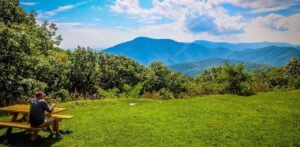
The 20 Best Blue Ridge Parkway Picnic Areas in NC & VA
There’s hardly an inch of the Blue Ridge Parkway that wouldn’t make a lovely spot to have a picnic. Whether you’ve been taking a scenic

Gravity-Defying Family Fun at Mystery Hill in Blowing Rock NC
We’ve visited 50+ Blue Ridge Mountain towns in the 4 years since we launched this site, and several of them we’ve visited numerous times. Blowing
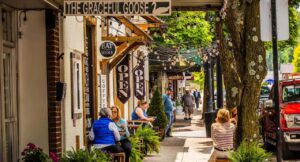
The 10 Best Things to Do in Galax VA (Blue Ridge Parkway Milepost 215)
Located about 7 miles north of the Blue Ridge Parkway, Galax VA is the epitome of the ideal small mountain town in Southwest Virginia. Some
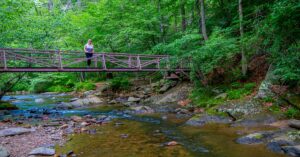
The 10 Best Hiking Trails on the Blue Ridge Parkway in Virginia
Spanning 469 miles in North Carolina and Virginia, the Blue Ridge Parkway should be on the bucket list of any avid hiker or road trip
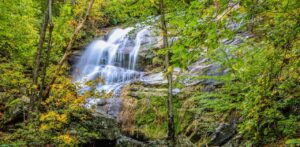
The 10 Best Waterfalls on/near the Blue Ridge Parkway in Virginia
There are over 200 miles of the Blue Ridge Parkway in Virginia. That stretch is riddled with marvelous Blue Ridge Mountain views that leave little
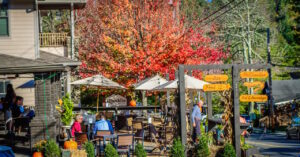
Exploring Downtown Blowing Rock NC: Restaurants, Shopping & More
Blowing Rock is a quintessential little North Carolina mountain town with an upscale vibe, located right in the heart of the Blue Ridge Mountains. It’s
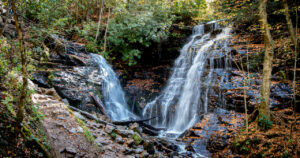
How to Get to the Soco Falls Trail Near Cherokee & Maggie Valley NC
Located on US-19, just 1.5 miles off the Blue Ridge Parkway at Soco Gap (Milepost 455.7), Soco Falls is an extremely popular place to visit

Visiting the Blowing Rock Attraction in Blowing Rock NC
Blowing Rock NC is located just a couple of miles south of the Blue Ridge Parkway. Drivers simply exit onto US-221N between Moses H. Cone

The 20 Best Blue Ridge Parkway Overlooks in North Carolina
The state of North Carolina is home to over half of the Blue Ridge Parkway’s 469 total miles, and the mountain overlooks in NC are

The Linn Cove Viaduct Trail, Visitor Center & History (BRP MP 304.4)
The Blue Ridge Parkway is one of the premier scenic drives in the USA, and also the most visited national park in the country. Created
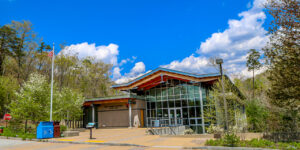
Why You Need to Visit the Blue Ridge Parkway Visitor Center (MP 384)
Whether you’re taking your very first Blue Ridge Parkway road trip or– like us– you’ve explored the scenic route multiple times, a visit to the

The 20 Best Blue Ridge Parkway Overlooks in Virginia
There’s a wealth of beautiful things to see while driving the Blue Ridge Parkway. But the 200+ scenic mountain overlooks found along the way are
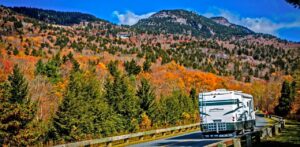
A Detailed History of the Blue Ridge Parkway
The 469-mile Blue Ridge Parkway is widely regarded as “America’s favorite drive,” with over 16 million annual visitors making it the most popular unit of

The 20 Best Blue Ridge Parkway Restaurants in VA & NC
When we think of America’s most beloved scenic route, most people envision jaw-dropping Blue Ridge Parkway overlooks, amazing waterfalls, and/or the colorful foliage along the Blue

The 10 Best Things to Do in Bedford VA (BRP MP 85.6–90.9)
Founded in 1782 (when it was originally known as Liberty), Bedford VA is one of our favorite small towns in the Shenandoah Valley. Located about

Visiting the Southern Highland Craft Guild Folk Art Center (Asheville NC)
The Southern Highland Craft Guild has been an advocate for high-quality crafts being made and sold in the southern Appalachian Mountains since the 1930s. Their mission

How to Plan an Amazing Blue Ridge Parkway Road Trip
The Blue Ridge Parkway stretches 469 miles in Virginia and North Carolina, connecting Shenandoah National Park to Great Smoky Mountains National Park. Though seasoned travelers
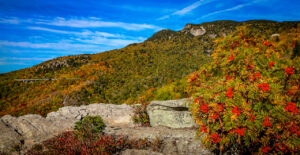
Hiking Rough Ridge on the Blue Ridge Parkway in NC
There are countless hiking trails on the Blue Ridge Parkway, and each offers a little something special. But the relatively short Rough Ridge hike ranks
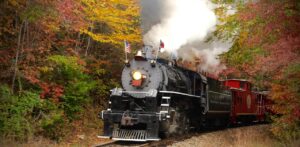
Fall in North Carolina: 25 Great Places to See Fall Colors in NC
[Updated August 6, 2023] Fall in North Carolina is particularly special because the autumn leaves are around for an extended amount of time. The vibrant fall

The 20 Best Overlooks on the Blue Ridge Parkway in Fall
The Blue Ridge Mountains are famed for their stirring scenic vistas, and the Blue Ridge Parkway in Fall is arguably the crème de la crème.
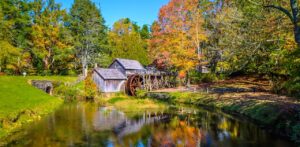
Exploring Mabry Mill on the Blue Ridge Parkway in Virginia
[Updated January 28, 2025] Stretching 469 miles from Great Smoky Mountains National Park in North Carolina to Shenandoah National Park in Virginia, the Blue Ridge Parkway
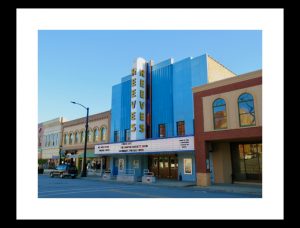
The 15 Best Things to Do in Elkin NC & the Yadkin Valley
[Updated 6/26/2023] Just east of the Blue Ridge Mountains, rocky ridges smooth out into the rolling hills and lively mountain streams known as the North
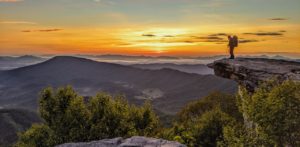
The 15 Best Things to Do in Roanoke VA
[Updated June 16, 2023] With a population of around 100,000 people, Roanoke is both the largest city along the Blue Ridge Parkway and the largest
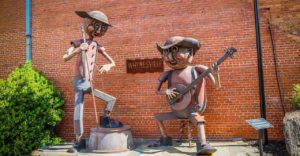
The 20 Best Things to Do in Waynesville NC & Haywood County
[Updated June 7, 2023] When my wife and I explore the Blue Ridge Mountains, it’s typically with two main goals in mind. The first objective

The 15 Best Things to Do in Maggie Valley NC
[Updated May 22, 2023] Located about halfway between Bryson City and Asheville, Maggie Valley NC is a small mountain town with something of a split personality.
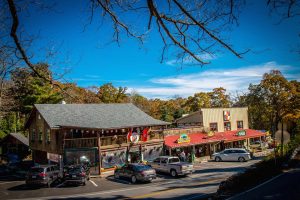
15 Best Things to Do in Little Switzerland NC (BRP MP 334)
[Updated January 8, 2024] One of the things people don’t tell you about taking a Blue Ridge Parkway road trip is how remarkably uncommercialized this
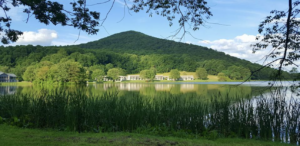
Visiting the Peaks of Otter Lodge & Campground in Bedford VA
We’ve been fortunate enough to drive the entire 469-mile length of the Blue Ridge Parkway several times over the past two years. And though the

The 13 Best Blue Ridge Parkway Campgrounds to Visit
The best Blue Ridge Parkway campgrounds including info on facilities, unique features and nearby attractions.
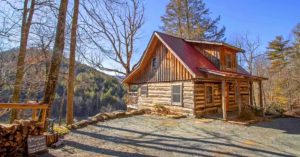
The 20 Best Cabin Rentals in Boone NC
[Updated on 1/3/2023] Located about 85 miles northeast of Asheville, Boone NC is a popular mountain town that’s packed full of outdoor activities and attractions.
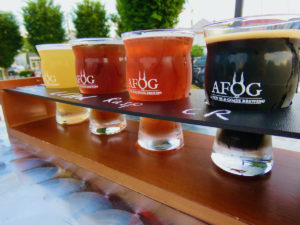
The 8 Best Breweries in Roanoke VA, the Heart of Virginia’s Blue Ridge
[Updated August 16, 2022] The fact that a Blue Ridge mountain town the size of Roanoke VA (population 99,411) has enough breweries to create an “8
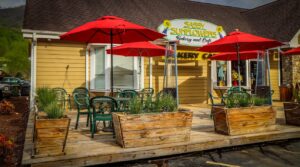
10 Best Cherokee NC Restaurants for Breakfast, Lunch & Dinner
Choosing the best restaurants in Cherokee NC is an interesting challenge. Most major tourist towns in the Blue Ridge Mountains– such as Asheville NC, Blue
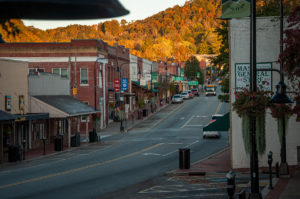
25 Best Things to Do in Boone NC (Blue Ridge Parkway MM 291.8)
[Updated January 9, 2023] Located just a couple of hours north of downtown Asheville, the town of Boone NC is the county seat for Watauga
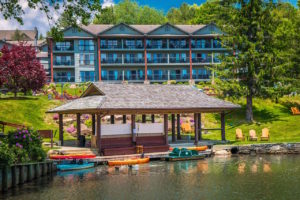
The 15 Best Blue Ridge Parkway Hotels & Cabin Rentals in NC & VA
A guide to the 15 Best Blue Ridge Parkway hotels, cabin rentals, and B&Bs in NC & VA, spanning nearly the entire length of the BRP.
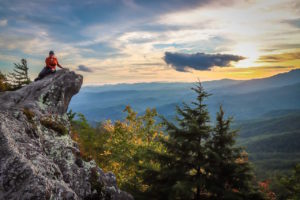
The 20 Best Things to Do in Blowing Rock NC
[Updated June 14, 2022] Known as the “Crown of the Blue Ridge Mountains,” Blowing Rock NC is widely regarded as one of the most charming
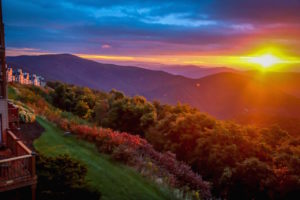
Things to Do at Wintergreen Resort in Summer (Near Waynesboro VA)
Things to Do at Wintergreen Resort in Summer, including all the best hiking trails, waterfalls, family activities and Wintergreen restaurants.
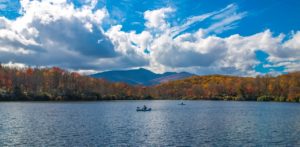
Exploring Julian Price Campground & Memorial Park in Blowing Rock NC
Much of the press on the Blue Ridge Parkway celebrates it as a wonderfully preserved 469-mile scenic route. But much of what makes the world-renowned road

The 15 Best Blowing Rock Cabin Rentals (1 to 4+ Bedrooms)
Located just south of Boone, Blowing Rock is a tourism-driven North Carolina mountain town known as the “Crown of the Blue Ridge Mountains.” The town was
The 25 Best Blue Ridge Parkway Hikes for NC Day Trips
[Updated on March 9, 2022] The Blue Ridge Parkway road trip is truly an American classic. It’s possible to traverse the entire 469-mile route on
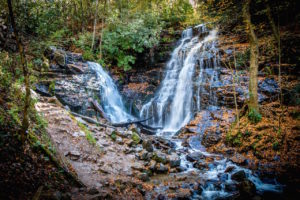
The 25 Best Blue Ridge Parkway Waterfalls in North Carolina
The 25 Best Blue Ridge Parkway Waterfalls in North Carolina, from Boone and Burnsville to Asheville, Cherokee and beyond!

The 10 Best Restaurants in Banner Elk NC for Foodies
Located 16 miles west of Boone and 18 miles from Blowing Rock, Banner Elk ranks high among the most beloved small towns in North Carolina‘s
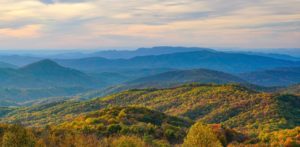
The Best Hiking in Asheville NC Bucket List (Top 25 Hiking Trails)
[Updated 2/16/22] Between the vast Pisgah National Forest, rolling Blue Ridge Mountains, wondrous waterfalls, and countless meandering creeks and verdant meadows, there’s no shortage of

Visiting Linville Falls Campgrounds, RV Park & Cabins in Linville Falls NC
Located about 55 miles northeast of Asheville NC at milepost 316.4, Linville Falls is perhaps the most famous of the many waterfalls on the Blue Ridge Parkway.

The 10 Best Restaurants in Blowing Rock NC for Foodies
Located just 10 miles south of Boone, the tiny mountain town of Blowing Rock (population 1,163) is one of the most tourist-friendly towns in the

The 10 Best Restaurants in Roanoke VA (Virginia’s Blue Ridge)
[Updated 1/12/2022] The city of Roanoke VA has no shortage of great restaurants to choose from. With a population of around 100,000 people– the largest
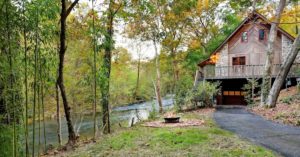
The 15 Best VRBO Cabins in Asheville NC
Asheville, North Carolina is a special place where the excitement of city life and the thrill of outdoor adventure collide to offer a Blue Ridge
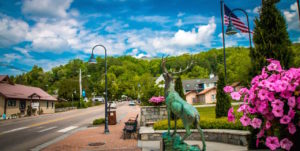
The 15 Best Things to Do in Banner Elk NC
[Updated No 16, 2024] Located in the North Carolina High Country, less than 20 miles from Boone and Blowing Rock, Banner Elk is one of
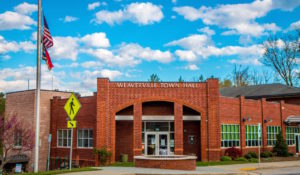
The 10 Best Things to Do in Weaverville NC
We started this website in large part because we wanted to explore the small towns of the beautiful Blue Ridge Mountains in the search for

The 10 Best Waterfalls Near Boone NC
Located in the North Carolina High Country, Boone is a scenic college town with a surplus of art galleries, shopping, restaurants, hiking trails, Christmas Tree Farms,
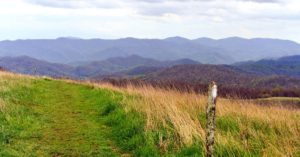
The 15 Best Boone NC Hiking Trails to Explore
[Updated August 3, 2021] The Blue Ridge Mountain town of Boone NC is best-known for its Christmas tree farms and outdoor recreation opportunities, offering everything

Things to Do at Center In The Square in Downtown Roanoke VA
Encompassing 43 square miles, with a population right around 100,000, Roanoke is the largest city on the Blue Ridge Parkway, with loads of great shopping,

Exploring the Blue Ridge Music Center Near Galax VA (Blue Ridge Parkway MP 213)
The Blue Ridge Music Center was established by an act of Congress in 1985 to celebrate the rich cultural history and ongoing musical traditions of the
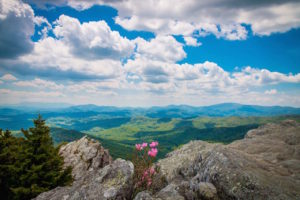
Things to Do at Grandfather Mountain State Park in Banner Elk NC
For me, the monolithic majesty of Grandfather Mountain preceded itself. On a few occasions in the past, my wife Emma and I visited friends who
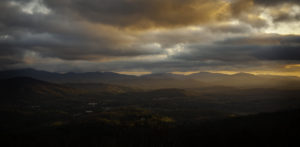
Things to Do at Moses H. Cone Memorial Park Near Blowing Rock NC
The short stretch of the Blue Ridge Parkway that runs from just east of Boone NC to just west of Blowing Rock is particularly packed with

The Cradle of Forestry in Pisgah National Forest (Near Brevard NC)
The Cradle of Forestry in America was originally known as the Biltmore Forest School. It was founded in 1898 by Carl A. Schenck, a German
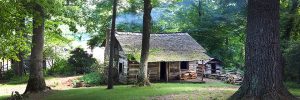
The Hickory Ridge Living History Museum and “Horn in the West” in Boone NC
The Southern Appalachian Historical Association was formed to preserve the history and cultural heritage of Watauga County and the surrounding areas in the North Carolina

How to Get to Crabtree Falls Near Little Switzerland NC
[Updated August 12, 2021] The Blue Ridge Parkway is the most visited national park unit in the USA, attracting more than 15 million visitors each
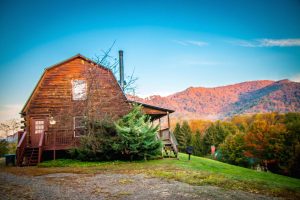
Visiting Historic Engadine Inn and Cabins Near Asheville NC
[Updated July 27, 2021] With only one or two Blue Ridge Parkway hotels in North Carolina, it’s not easy to find accommodations along the world-famous
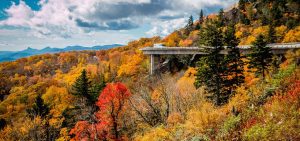
40 Fascinating Facts About The Blue Ridge Parkway
Arguably ranking among the world’s great road trips, the Blue Ridge Parkway was built in the 1930s to connect Great Smoky Mountains National Park with Shenandoah

Exploring Emerald Village: North Carolina Gem Mines in Little Switzerland
Emerald Village is located just 31 miles from Asheville and three miles off the Blue Ridge Parkway. The family-friendly attraction proved to be one of
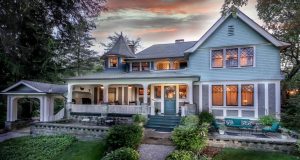
The Black Walnut Inn, a Historic Bed and Breakfast in Asheville NC
[Updated July 29, 2021] “You don’t choose Asheville… Asheville chooses you.” This enigmatic insight from Peter White, co-owner of the Black Walnut Bed and Breakfast
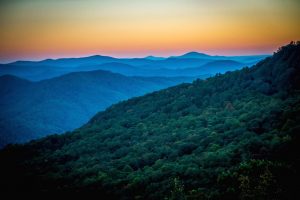
30 Fascinating Blue Ridge Mountains Facts
Stretching north to south across the eastern United States, the beautiful Blue Ridge Mountains are truly an iconic American landscape. The Blue Ridge range encompasses

The 20 Best Blue Ridge Parkway Overlooks in NC & VA
[Updated September 14, 2021] In our opinion, taking a Blue Ridge Parkway road trip is one of the finest romantic getaways or family vacations the
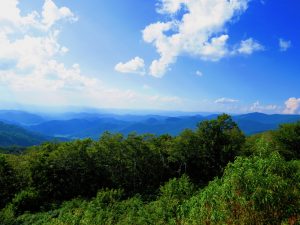
Exploring Craggy Gardens, NC (Blue Ridge Parkway Milepost 344.1, 382.5 & 384.7)
As a tourist destination, the Blue Ridge Parkway specializes in three things: spring blooms, autumn leaves, and jaw-dropping views of the Blue Ridge Mountains. While

Visiting Doughton Park (Blue Ridge Parkway Mile Marker 238.5 – 244.7)
Located in North Carolina between Blue Ridge Parkway mile markers 238.5 and 244.7, Doughton Park is actually the largest recreation area along the famous road.
